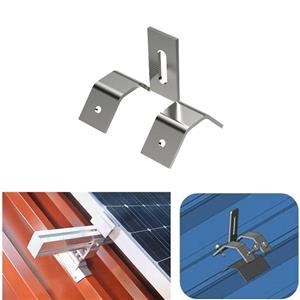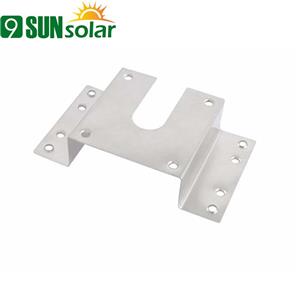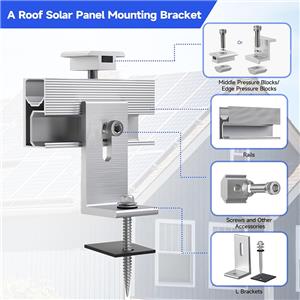-
22-11-2025
Harness the Sun: A Quick Guide to Solar Carports
A solar carport is a smart structure that provides shade for your vehicle while generating clean electricity. Key types include single-slope designs for solar carport residential use and larger dual-pitch structures for commercial lots. These solar carport structures are built with durable frames (galvanized steel or aluminum) and topped with efficient car port solar panels, primarily monocrystalline for high performance. The main benefits are significant: Reduces electricity bills and offers a strong return on investment. While the initial solar carport cost can be notable, incentives and long-term savings make it worthwhile. A solar powered car port makes perfect use of existing space, protects your vehicle, and is ideal for future EV charging. In short, a solar carport is a practical and sustainable upgrade that turns your parking space into a power source.
-
22-08-2025
Solar Roofs: Turn Your Home into a Clean Energy Hub – Key Insights You Need
This blog introduces solar roofs, which come in two main types—standard solar panel systems with high efficiency and solar shingle/tile systems blending aesthetics, highlighting their advantages like reduced electricity bills, environmental friendliness, and increased property value. It also notes they are suitable for residential homes, commercial buildings, and remote areas, making them a smart, sustainable investment for individuals and businesses.
-
28-07-2025
Solar Balcony Racks: Unlocking Renewable Energy at Your Fingertips
This article introduces solar balcony racks, covering their definition, working mechanism, benefits, selection tips and application scenarios, highlighting their role in utilizing solar energy, saving costs and being eco-friendly. It emphasizes that choosing the right rack allows people to make full use of solar power and move towards a greener life.
-
15-07-2025
Container Solar Roof Support: A Sustainable Solution for Off-Grid Living
Container solar roof supports combine durable shipping containers with efficient solar panels, offering a portable, cost-effective, and eco-friendly energy solution for off-grid living, remote sites, and emergencies. These versatile systems maximize solar power while providing weather protection and extra storage space.
-
12-03-2025
The Advantages of Solar Ground Systems Across Diverse Terrains
Solar ground systems are a versatile and efficient renewable energy solution, adaptable to diverse terrains like flat, sloped, rocky, or agricultural land, and even brownfield sites. Offering advantages such as optimal sunlight exposure, scalability, ease of maintenance, and environmental benefits, they provide a sustainable way to generate clean energy while making productive use of underutilized land, paving the way for a greener future.
-
25-03-2025
Harnessing the Sun: How Solar-Powered Greenhouses Are Revolutionizing Agriculture
Solar-powered greenhouses combine traditional growing methods with renewable energy, offering year-round cultivation while cutting costs and reducing environmental impact. With benefits like energy independence, government incentives, and smart climate control, they represent a sustainable future for agriculture as solar technology continues to advance.
-
25-02-2025
Harnessing the Power of the Sun: The Advantages of Solar Ground Systems
The article **"Harnessing the Power of the Sun: The Advantages of Solar Ground Systems"** highlights the benefits of ground-mounted solar systems as a sustainable and efficient renewable energy solution. Solar ground systems, installed in open spaces like fields or solar farms, offer advantages such as **optimal energy production** through adjustable panel angles, **scalability** for both residential and commercial use, **easy maintenance**, and **no structural limitations** compared to rooftop systems. They also provide **enhanced cooling** for better efficiency, are **environmentally friendly** by reducing fossil fuel reliance, and allow for **dual land use**. Despite higher initial costs, their long-term savings, durability, and flexibility make them a reliable and future-proof choice for clean energy.




